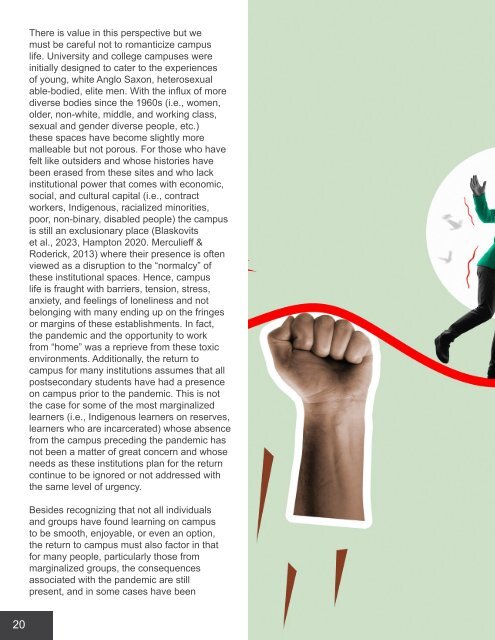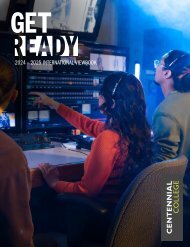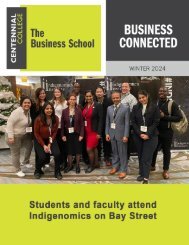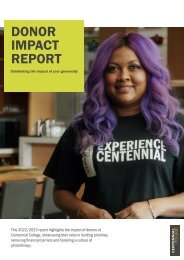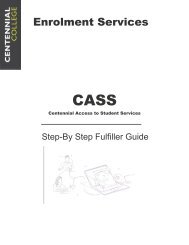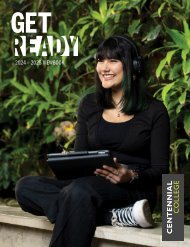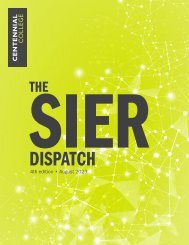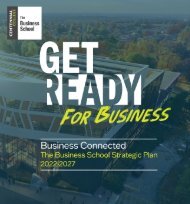The Teaching and Learning Innovation Digest - May 2023
Welcome to a truly special edition of the Teaching and Learning Innovation Digest! Our seventh annual academic publication has assumed an incredibly meaningful shape and form for a number of reasons. Not only did we receive an enthusiastic response with over 30 submissions via our institutional broadcast, but we also have consciously and intentionally embraced the principles of Universal Design for Learning by attempting to represent and celebrate the varied forms of expressions therein. From reflective essays, poetry, visual and performing arts, podcasts, video conversations to scholarly work, academic and applied research, news and updates, and interviews, this is truly a power-packed publication!
Welcome to a truly special edition of the Teaching and Learning Innovation Digest! Our seventh annual academic publication has assumed an incredibly meaningful shape and form for a number of reasons. Not only did we receive an enthusiastic response with over 30 submissions via our institutional broadcast, but we also have consciously and intentionally embraced the principles of Universal Design for Learning by attempting to represent and celebrate the varied forms of expressions therein. From reflective essays, poetry, visual and performing arts, podcasts, video conversations to scholarly work, academic and applied research, news and updates, and interviews, this is truly a power-packed publication!
Create successful ePaper yourself
Turn your PDF publications into a flip-book with our unique Google optimized e-Paper software.
<strong>The</strong>re is value in this perspective but we<br />
must be careful not to romanticize campus<br />
life. University <strong>and</strong> college campuses were<br />
initially designed to cater to the experiences<br />
of young, white Anglo Saxon, heterosexual<br />
able-bodied, elite men. With the influx of more<br />
diverse bodies since the 1960s (i.e., women,<br />
older, non-white, middle, <strong>and</strong> working class,<br />
sexual <strong>and</strong> gender diverse people, etc.)<br />
these spaces have become slightly more<br />
malleable but not porous. For those who have<br />
felt like outsiders <strong>and</strong> whose histories have<br />
been erased from these sites <strong>and</strong> who lack<br />
institutional power that comes with economic,<br />
social, <strong>and</strong> cultural capital (i.e., contract<br />
workers, Indigenous, racialized minorities,<br />
poor, non-binary, disabled people) the campus<br />
is still an exclusionary place (Blaskovits<br />
et al., <strong>2023</strong>, Hampton 2020. Merculieff &<br />
Roderick, 2013) where their presence is often<br />
viewed as a disruption to the “normalcy” of<br />
these institutional spaces. Hence, campus<br />
life is fraught with barriers, tension, stress,<br />
anxiety, <strong>and</strong> feelings of loneliness <strong>and</strong> not<br />
belonging with many ending up on the fringes<br />
or margins of these establishments. In fact,<br />
the p<strong>and</strong>emic <strong>and</strong> the opportunity to work<br />
from “home” was a reprieve from these toxic<br />
environments. Additionally, the return to<br />
campus for many institutions assumes that all<br />
postsecondary students have had a presence<br />
on campus prior to the p<strong>and</strong>emic. This is not<br />
the case for some of the most marginalized<br />
learners (i.e., Indigenous learners on reserves,<br />
learners who are incarcerated) whose absence<br />
from the campus preceding the p<strong>and</strong>emic has<br />
not been a matter of great concern <strong>and</strong> whose<br />
needs as these institutions plan for the return<br />
continue to be ignored or not addressed with<br />
the same level of urgency.<br />
Besides recognizing that not all individuals<br />
<strong>and</strong> groups have found learning on campus<br />
to be smooth, enjoyable, or even an option,<br />
the return to campus must also factor in that<br />
for many people, particularly those from<br />
marginalized groups, the consequences<br />
associated with the p<strong>and</strong>emic are still<br />
present, <strong>and</strong> in some cases have been<br />
further exacerbated, making the return to<br />
campus challenging. For example, many<br />
international students continue to struggle<br />
with crossing borders (i.e., visa backlogs <strong>and</strong><br />
navigating immigration systems made more<br />
complicated by the p<strong>and</strong>emic) (Deshmukh,<br />
2021). Countless people around the world<br />
who struggled economically before <strong>and</strong><br />
during the p<strong>and</strong>emic continue to do so, with<br />
many finding that despite the lifting <strong>and</strong>/or<br />
easing of p<strong>and</strong>emic restrictions their socioeconomic<br />
conditions have worsened due not<br />
just to a sluggish economy or high inflation,<br />
but also because of ongoing neoliberal<br />
economic cost cutting measures imposed on<br />
workers (Blaskovits, <strong>2023</strong>). This has had a<br />
ripple effect, from poor <strong>and</strong> middle-income<br />
families in the global South incurring greater<br />
debt to send their children to postsecondary<br />
institutions in the global North, to students<br />
(<strong>and</strong> contract employees) working multiple<br />
precarious jobs to secure housing, food, <strong>and</strong><br />
other basic necessities.<br />
<strong>The</strong> list of systemic inequities that have<br />
been exacerbated by the p<strong>and</strong>emic cannot<br />
be ignored when envisioning a return to<br />
campus. Neither must the solutions to these<br />
structural issues be reduced to the level of<br />
individual issues. For example, the state of<br />
student’s mental health was a concern that<br />
preceded the p<strong>and</strong>emic, but was exponentially<br />
worsened by it. <strong>The</strong> p<strong>and</strong>emic exposed the<br />
chronic underfunding of mental health not just<br />
in education but in the wider society (Tremblay<br />
& Brunette, 2022). <strong>The</strong> link between mental<br />
health <strong>and</strong> issues like student performance,<br />
retention, engagement, <strong>and</strong> other indicators of<br />
academic success has been well-established<br />
in the research literature (Shankar & Park,<br />
2016, Storie et al., 2010). However, the<br />
growing stream of research (Checa-Domene<br />
et al., 2022, Vizoso Gómez & Arias-Gundín,<br />
2019) that focus on the relationship between<br />
mental health <strong>and</strong> individual mindsets, traits,<br />
<strong>and</strong> competencies like self-esteem, optimism,<br />
emotional intelligence, <strong>and</strong> resilience fail to<br />
deal with many of the structural root causes<br />
of mental health (i.e., poverty, patriarchy,<br />
20<br />
21


